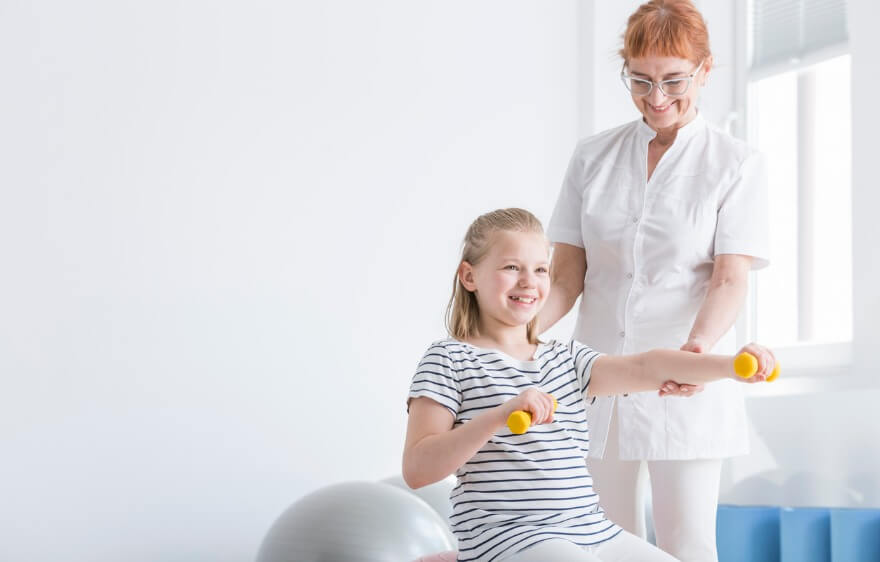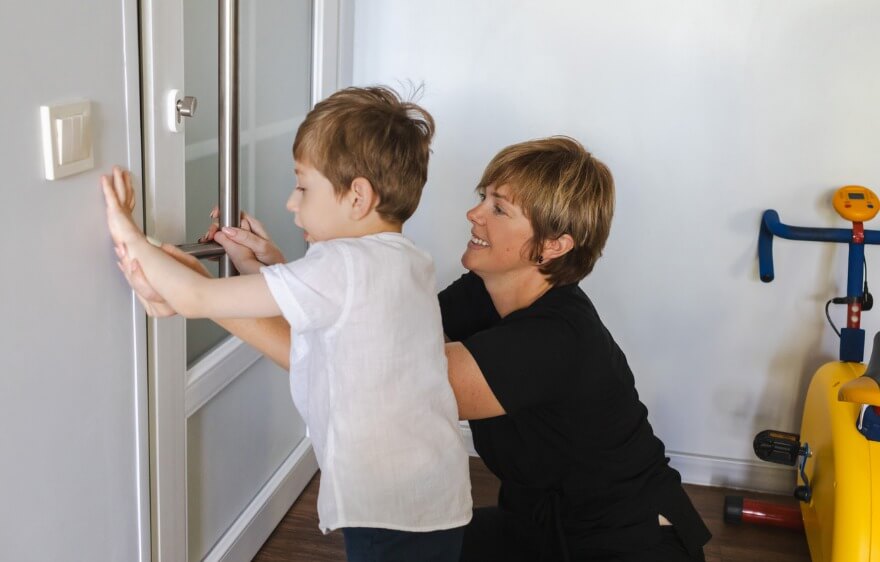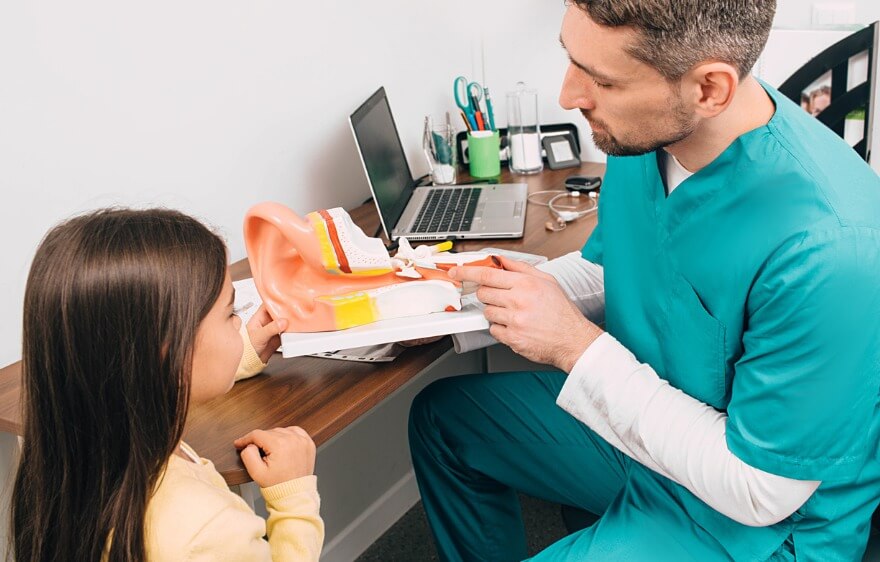Occupational therapy (OT) is all about helping individuals live their lives to the fullest by overcoming challenges that impact their daily activities. But how do OTs figure out the best way to help? One of the most insightful tools they use is the Person-Environment-Occupation (PEO) Model. If you’re an occupational therapist, the PEO model offers a fascinating and practical framework for improving the lives of the children you help.
In this blog, we’ll dive deep into the PEO model: what it is, how it works in OT, the intrinsic and extrinsic factors it considers, and its importance for crafting effective therapy plans. Plus, we’ll explore how it’s particularly beneficial in pediatric occupational therapy.
What is the PEO Model?
The Person-Environment-Occupation (PEO) Model is a framework used in occupational therapy to evaluate and address the complex relationships between three key elements:
- Person: The individual, including physical, emotional, cognitive, and social characteristics.
- Environment: The physical, social, cultural, and institutional spaces in which a person operates.
- Occupation: The daily tasks, activities, and roles that are meaningful and necessary for the person.
This model recognizes that achieving optimal performance and well-being isn’t just about fixing one of these components in isolation. Instead, it’s about finding the perfect balance and fit between all three.
Think of the PEO model as a Venn diagram where these three components overlap. The more harmony between the person, their environment, and their occupations, the better their quality of life and ability to perform daily activities.
How Does the PEO Model Work in Occupational Therapy?
Occupational therapists use the PEO model to assess their clients’ challenges and set effective goals. Rather than focusing solely on the person’s limitations or impairments, the model encourages therapists to look holistically at all three components.
Here’s how it works step by step:
- Evaluate the Person: The therapist gathers information about the individual’s physical abilities, mental health, cognitive function, and personal goals. For example, does the person struggle with fine motor skills, or are they experiencing sensory sensitivities?
- Assess the Environment: Next, the therapist examines the physical and social environment. Is the person’s home accessible? Are they supported by friends, family, or caregivers? In a school setting, is the classroom conducive to their learning style?
- Analyze the Occupation: The therapist then focuses on the activities themselves. Are the tasks too complex or physically demanding? Do they align with the person’s values and interests?
- Find the Fit: By identifying areas of misalignment, the therapist can suggest interventions to improve the interaction between the person, their environment, and their occupations. For example, they might recommend adaptive equipment, environmental modifications, or task simplifications.
Intrinsic and Extrinsic Factors in the PEO Model
The beauty of the PEO model is how it acknowledges both intrinsic (internal) and extrinsic (external) factors that influence a person’s ability to engage in meaningful activities.
Intrinsic Factors
Intrinsic factors relate to the individual’s internal characteristics, such as:
- Physical Abilities: Strength, coordination, mobility, and overall health
- Cognitive Skills: Problem-solving, memory, attention span, and processing speed
- Emotional State: Motivation, self-confidence, and mental well-being
- Personal Values and Interests: What the individual finds meaningful and enjoyable
Extrinsic Factors
Extrinsic factors are external influences that shape the individual’s environment, including:
- Physical Environment: Accessibility, layout, and safety of spaces
- Social Environment: Relationships, support systems, and cultural norms
- Institutional Factors: Policies, programs, and resources available to the individual
Occupational therapists consider how these factors interact and overlap. For example, a child who struggles with sensory processing (intrinsic) might find a noisy classroom (extrinsic) overwhelming, making it harder to focus on their schoolwork (occupation).
Why is the PEO Model Important for Broader OT Therapy Plans?
The PEO model is more than just a diagnostic tool — it’s a roadmap for creating personalized, effective therapy plans. Here’s why it’s so valuable:
- Holistic Perspective: By considering the person, environment, and occupation together, therapists can craft interventions that address all aspects of a client’s life.
- Individualized Solutions: Every client is unique, and the PEO model ensures that therapy plans are tailored to their specific needs, goals, and circumstances.
- Dynamic Approach: Life is constantly changing. The PEO model is flexible, allowing therapists to adapt their interventions as the person’s abilities or environment evolve.
- Empowers Clients: Rather than focusing on “fixing” the person, the PEO model encourages empowering them by modifying tasks and environments to suit their abilities.
Benefits of the PEO Model in Pediatric OT
The PEO model is particularly effective in pediatric occupational therapy, where children’s needs and environments can vary widely. Here are some of its unique benefits:
1. Supports Developmental Milestones
Children grow and change rapidly, so aligning their activities with their developmental stage is critical. The PEO model helps therapists ensure that tasks are age-appropriate and engaging.
2. Encourages Play-Based Therapy
Play is a primary occupation for kids! The PEO model allows therapists to design interventions that integrate fun and meaningful play activities into therapy sessions.
3. Promotes Inclusion
In school or social settings, the PEO model helps identify barriers to participation and suggests ways to make environments more inclusive, such as using sensory-friendly tools or adaptive seating.
4. Empowers Families
Parents and caregivers play a central role in pediatric OT. The PEO model includes them, offering strategies to create supportive home environments and encourage skill development.
Example of the PEO Model in Action
Let’s look at a practical hypothetical example of the PEO model in pediatric OT:
- Person: A seven-year-old child with cerebral palsy who struggles with fine motor tasks, such as writing.
- Environment: A traditional classroom with standard desks and chairs, limited adaptive tools, and a fast-paced learning environment.
- Occupation: Completing handwriting assignments and participating in group activities.
Using the PEO model, the therapist might:
- Introduce adaptive pencils or a slanted writing board — modifying the occupation.
- Recommend a height-adjustable desk or a quieter workspace — altering the environment.
- Provide exercises to improve hand strength and coordination — enhancing the person’s abilities.
By addressing all three components, the child can better engage in school activities with greater confidence and success.
Achieving Success With the PEO Model
The Person-Environment-Occupation (PEO) Model is a game-changer in occupational therapy. By taking a holistic approach to understanding the interplay between individuals, their environments, and their daily activities, the PEO model creates a clear path to improved function and well-being.
For pediatric occupational therapy, the PEO model shines as a versatile and family-friendly framework for pediatric occupational therapy. It empowers children to meet developmental milestones, fosters inclusion and brings joy through meaningful play.
If you’re an OT, keeping the PEO model in mind can help unlock potential in anyone struggling with life’s everyday challenges. The fit between the person, environment, and occupation isn’t just theory — it’s the key to meaningful, fulfilling living!
Join the Care Options For Kids Team!
Are you ready for meaningful work that comes with benefits and not burnout? Join the compassionate care team that helps children and families live their best lives. Our clinicians provide best-in-class pediatric nursing, therapy, and school-based services. We bring individualized care to children where they live, work, and play. We have opportunities in homes, schools, and clinics across the country.
Apply at Care Options for Kids now. We make it easy to start so you can make a difference as soon as possible.






